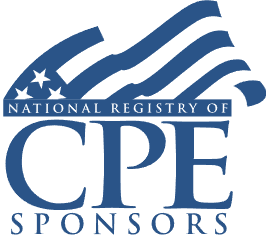Foreign Outbound Transaction Planning: Navigating Deferral Under Subpart F and the New IRC Sections 367, 7874, and 385 Regulations
TBD

Course Details
- smart_display Format
On-Demand
- signal_cellular_alt Difficulty Level
Intermediate
- work Practice Area
Corporate Tax
- event Date
Tuesday, August 16, 2016
- schedule Time
1:00 PM E.T.
- timer Program Length
110 minutes
-
BARBRI is a NASBA CPE sponsor and this 110-minute webinar is accredited for 2.0 CPE credits.
-
BARBRI is an IRS-approved continuing education provider offering certified courses for Enrolled Agents (EA) and Tax Return Preparers (RTRP).
-
Live Online
On Demand
This course will provide corporate tax advisers with a broad and practical guide to foreign tax planning of outbound transactions. The panel will describe the various deferral structures allowed by the Internal Revenue Code, review the ownership and asset thresholds for “CFC” and “PFIC” status and detail the related reporting requirements for those entities. The panel will also take a critical look at key developments concerning outbound foreign transactions, including the new Anti-Inversion Regulations under Section 7874 and proposed new regulations under Sections 385 and 367(a) and (d).
Description
Integral to corporate tax planning for outbound transactions is an understanding of the deferral mechanisms the Code provides for U.S. corporate taxpayers engaged in foreign business activities. With the Treasury increasingly focused on closing the “tax gap” created in part by foreign transfers, it is more important than ever for tax advisers to structure transactions and activities to navigate the evolving landscape of outbound transaction rules.
Knowledge of the ownership thresholds and operating rules that define controlled foreign corporations (CFCs), passive foreign investment companies (PFICs), and other anti-deferral regimes is key to minimizing tax exposures in outbound transactions. Understanding the use of hybrid entities and instruments is also fundamental to effective outbound tax planning.
The IRS has taken significant steps to limit what it considers abuses in foreign tax deferral regimes. Newly proposed regulations promulgated under Sections 367(a) and (d) and Section 385 create potentially costly tax traps for outbound planning. Also, the upcoming “country-by-country” reporting Regulations will enable the IRS to track U.S. outbound activities and intercompany transfer pricing. While the Service is still in the process of crafting these rules, the time for advisers to plan for these prospective changes is now.
Listen as our experienced panel provides a practical guide to the factors involved in outbound tax planning, going beyond the basics and acronyms to help advisers more thoroughly understand the structure of outbound deferral opportunities and challenges.
Outline
- Explanation of Various Structures for Outbound Transactions
- New anti-hybrid rules
- Amended rules applicable to CFCs (“Controlled Foreign Corporations”) and PFICs (“Passive Foreign Investment Companies”)
- Related reporting requirements
- How to Structure Outbound Transfers of Intangibles in light of the newly proposed Regulations issued under Section 367(a) and (d)
- Planning Traps for the Unwary presented by the new Anti-Inversion Regulations and Proposed Section 385 Regulations
- What you need to know about the new U.S. Country-by-Country Reporting Regulations, as well as the evolving international transfer pricing norms being advocated by the OECD in its BEPS initiative
Benefits
The panel will analyze and tackle these and other relevant topics under:
- What are the ownership thresholds, which can trigger the end of taxdeferral treatment of outbound transactions and structures?
- What do the new Section 367 rules mean for goodwill, going-concern value, and other intangible assets?
- What must all international tax planners know about the new U.S. temporary regulations aimed at preventing corporate inversions?
- What impact could the Proposed Section 385 Regulations have on outbound planning—and specifically loans by U.S. –owned entities?
- What tax planning and compliance challenges will the new U.S. country-by-country reporting standards have on outbound transactions?
NASBA Details
Learning Objectives
After completing this seminar, you will be able to:
- Identify the ownership thresholds for various U.S.-owned foreign entities
- Recognize the "check-the-box" options in establishing outbound structures
- Determine the limited tax deferral opportunities each type of entity provides
- Indicate the basic provisions of Section 367(a) and (d), and the key recent changes to the regulations,
- Discern the impact of the proposed Section 385 Regulations and how they are likely to impact outbound transfers and the taxation of foreign investments
- Establish which companies must comply with the new country-by-country reporting standards
- Field of Study: Taxes
- Level of Knowledge: Intermediate
- Advance Preparation: None
- Teaching Method: Seminar/Lecture
- Delivery Method: Group-Internet (via computer)
- Attendance Monitoring Method: Attendance is monitored electronically via a participant's PIN and through a series of attendance verification prompts displayed throughout the program
- Prerequisite: Basic knowledge of taxation.

Strafford Publications, Inc. is registered with the National Association of State Boards of Accountancy (NASBA) as a sponsor of continuing professional education on the National Registry of CPE Sponsors. State boards of Accountancy have final authority on the acceptance of individual courses for CPE Credits. Complaints regarding registered sponsons may be submitted to NASBA through its website: www.nasbaregistry.org.

Strafford is an IRS-approved continuing education provider offering certified courses for Enrolled Agents (EA) and Tax Return Preparers (RTRP).
Unlimited access to premium CLE courses:
- Annual access
- Available live and on-demand
- Best for attorneys and legal professionals
Unlimited access to premium CPE courses.:
- Annual access
- Available live and on-demand
- Best for CPAs and tax professionals
Unlimited access to premium CLE, CPE, Professional Skills and Practice-Ready courses.:
- Annual access
- Available live and on-demand
- Best for legal, accounting, and tax professionals
Unlimited access to Professional Skills and Practice-Ready courses:
- Annual access
- Available on-demand
- Best for new attorneys
Related Courses

Calculating Foreign Sourced Dividends-Received Deduction After Tax Reform
Available On-Demand

Depreciation and Expensing: New Rules and Limits Under Current Tax Law
Available On-Demand